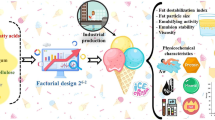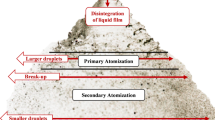Abstract
The compaction characteristics between reduced modified Proctor and modified Proctor tests have been compared. The results show that maximum dry unit weight values are comparable for both the tests but optimum moisture content values differ slightly more. For both the tests: optimum moisture content was found to correlate best with liquid limit, and the relationship for maximum dry unit weight with optimum moisture content was found to be almost the same. Since reduced modified Proctor requires less time and 40% less compaction energy as compared to modified Proctor test, it can be considered as a suitable alternative to the modified Proctor test.





Similar content being viewed by others
Abbreviations
- MDDRMP :
-
Maximum dry unit weight from reduced modified Proctor test
- MDDMP :
-
Maximum dry unit weight from modified Proctor test
- OMCRMP :
-
Optimum moisture content from reduced modified Proctor test
- OMCMP :
-
Optimum moisture content from modified Proctor test
- wL :
-
Liquid limit of soil
- wP :
-
Plastic limit of soil
- IP :
-
Plasticity index of soil
References
ASTM (2012a) D698–12: Standard test methods for laboratory compaction characteristics of soil using standard effort (12,400 ft-lbf/ft3 (600 kN-m/m3)). ASTM International, West Conshohocken, PA
ASTM (2012b) D1557–12: standard test methods for laboratory compaction characteristics of soil using modified effort (56,000 ft-lbf/ft3 (2,700 kN-m/m3)). ASTM International, West Conshohocken, PA
Gurtug Y, Sridharan A (2004) Compaction behaviour and prediction of its characteristics of fine grained soils with particular reference to compaction energy. Soils Found 44(5):27–36. https://doi.org/10.3208/sandf.44.5_27
Sharma B, Gogoi B, Sridharan A (2019) Static Compaction Characteristics of Coarse and Fine Grained Soils. In: Hossain Z, Zhang J, Chen C (ed) Solving Pavement and Construction Materials Problems with Innovative and Cutting-edge Technologies, GeoChina 2018, Sustainable Civil Infrastructures, Springer, Cham. https://doi.org/10.1007/978-3-319-95792-0_4.
Author information
Authors and Affiliations
Corresponding author
Additional information
Publisher's Note
Springer Nature remains neutral with regard to jurisdictional claims in published maps and institutional affiliations.
Rights and permissions
About this article
Cite this article
Shaivan, H.S., Sridharan, A. Comparison of Reduced Modified Proctor vs Modified Proctor. Geotech Geol Eng 38, 6891–6897 (2020). https://doi.org/10.1007/s10706-020-01405-3
Received:
Accepted:
Published:
Issue Date:
DOI: https://doi.org/10.1007/s10706-020-01405-3




